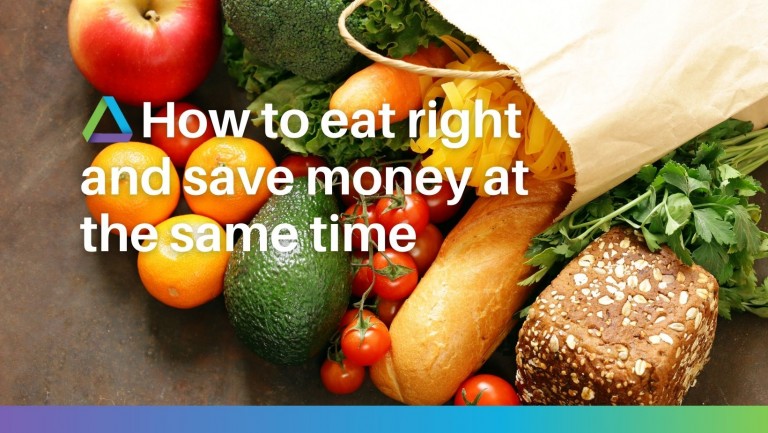Michael Merschel with American Heart Association News offers some simple tips to eating healthy on any budget.
"People think that healthy eating is an elite thing, that it's something you can only do if you have lots of money, and lots of spare time, and all kinds of fancy equipment," said Christine Hradek, a nutrition specialist at Iowa State University Extension and Outreach in Ames. "And really, that isn't true."
Start in a happy place.
The first step is to think about what kinds of foods you like, said Cheryl Anderson, dean of the Herbert Wertheim School of Public Health and Human Longevity Science at the University of California San Diego. Then, envision the healthiest version of them.
Are you a french-fry fiend? Ponder a baked potato seasoned with herbs as an affordable, not-soaked-in-fat option. Is boxed macaroni and cheese your go-to quick meal? You can get a whole bag of pasta for much less per serving. Sprinkle olive oil, fresh herbs and spices and maybe just a sprinkling of cheese, and you've just stretched your dollar and made something that's better for you.
Learn to cook.
"If you are always buying food that is at least partially prepared for you, chances are you're going to spend a lot more money on food than you need to," Hradek said.
You don't need to make something out of a gourmet magazine, she said. "But for overall habits, we tend to say investing a little bit of time can save you a lot of money."
Plan on it.
"You should not have to start fresh cooking from scratch every day," Hradek said. Planning before you shop can save time in the kitchen and money at the store.
If the idea of planning out a whole week is too much, start by planning just workdays, or just one meal a day. Take inventory of what you have on hand to make sure perishable items won't go to waste. Then fill in your list with things to purchase. It can help keep you from being tempted by things you don't need.
Planning also can ensure you hit all the healthy food groups you need each day. Several resources can be found online. For example, Iowa State's Spend Smart Eat Smart webpage has a printable menu planner with a checklist.
Leverage your leftovers.
Hradek calls them "planned-overs." Find a meal you can make, double the size, freeze half. You've just knocked out two meals in the time it takes to make one.
Planned leftovers let you take advantage of sale items. And they take away an excuse to grab something unhealthy in a rush.
Anderson, who travels a lot for work, uses this strategy. "When I make a meal on a Saturday afternoon, it looks like it's Thanksgiving in my house, because I've not just thought about me eating today – I'm thinking about that day when I get off of the airplane, and it's 9:30, and I don't want to drive through some fast-food restaurant."
Planning lets her go home and pull a nourishing, home-cooked meal out of the freezer.
Canned can be OK.
Frozen, too. At least when it comes to fruits and vegetables.
If canned beans make your time in the kitchen easier, have at it. "Just be mindful of what's in the can by looking at the labels," Anderson said.
Be store-savvy.
A lot of things that look like a sale are actually advertisements, Hradek said. Always compare the price with the items above and below on the store shelf.
Coupons also call for caution. If it's for a product you use regularly – fine, she said. "If the coupon is instead acting as an advertisement and is getting me to buy something I wouldn't have bought otherwise, I would probably avoid it." Especially if it would cause you to buy a bunch of something perishable.
This is another area where planning helps, Hradek said, by preventing you from impulsively stocking up on things you won't use. "Don't improvise with perishable items outside of your plan, because chances are you'll lose them."
Know where to get help.
If you're struggling to put food on the table, you've got plenty of company. According to Census Bureau numbers gathered in May, 19 million U.S. adults reported their household sometimes or often didn't have enough to eat in the last seven days.
Although many people look to local food pantries, the federal Supplemental Nutrition Assistance Program is the best place to start, Hradek said. State-by-state instructions can be found at the Department of Agriculture's website.
SNAP even allows shopping at farmers markets, Anderson said. "So that's a new and healthy thing."
Remember, she said, cheap food that's heavy on calories and light on nutrition comes with long-term costs, including obesity, diabetes and other heart disease risks.
Enjoy yourself.
"Food is more than just nourishment," Hradek said. It's about culture and memories, and there's no one-plan-fits-all approach to find balance. "If you're miserable, you're doing it wrong. It should be a source of pleasure."
But, she said, "a little bit of knowledge, a little bit of planning can add up to a lot of savings and healthier choices, regardless of your budget."
If you have questions or comments about this story, please email editor@heart.org. You can learn more and explore other nutrition and health topics at Heart.org.
Thank you, American Heart Association for sharing this article!

